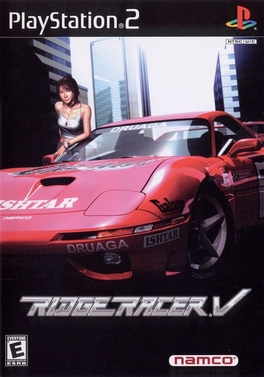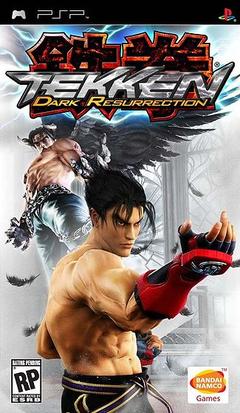
Soulcalibur is a weapon-based 3D fighting game developed by Project Soul and produced by Namco. It is the second game in the Soulcalibur series, preceded by Soul Edge in December 1995. Originally released in arcades on July 30, 1998, it ran on the Namco System 12 hardware. It was ported to the Dreamcast in 1999 with new features and improved graphics. The North American version was released in September 1999 as a launch game for the Dreamcast and was part of the successful launch of the new console. It became available as a downloadable title on the Xbox 360's Xbox Live Marketplace in July 2008 and it is forward compatible with the Xbox One along with the sequel, Soulcalibur II.

Soul Edge is a fighting game developed and published by Namco as the first installment in the Soulcalibur series of 3D fighting games. Introduced at the JAMMA trade show in November 1995, the full arcade game was released in early 1996, while later in December an upgraded and expanded version of the game was ported to the PlayStation. The PlayStation version was renamed Soul Blade in North America, Europe, and Australia.
Ridge Racer is a racing video game series developed and published for arcade systems and home game consoles by Bandai Namco Entertainment, formerly Namco. The first game, Ridge Racer (1993), was originally released in arcades for the Namco System 22 hardware, later ported to the PlayStation one year later as a launch title. It was met with several sequels and spin-off games for multiple platforms, the latest being the mobile game Ridge Racer Draw & Drift (2016) with the latest mainline game being Ridge Racer 7 (2006). Gameplay involves the player racing against computer-controlled opponents to be the first to finish in a race. Drifting is a core aspect of the series, and is used to keep speed while turning corners.

Tekken Tag Tournament is the fourth installment in the Tekken fighting game series. Tekken Tag Tournament was released as an arcade game in 1999, before becoming a North American and European launch title for the PlayStation 2 in 2000. The arcade version ran on the same Namco System 12 board with a 32-bit engine as Tekken 3, while the ported home console version received upgraded graphics. A sequel, Tekken Tag Tournament 2, was released in 2011. A remastered version of the game titled Tekken Tag Tournament HD was released for the PlayStation 3 in November 2011, as part of Tekken Hybrid.

Mr. Driller is a puzzle video game franchise created by Yasuhito Nagaoka and Hideo Yoshizawa for Namco. The eponymous first game was released in 1999 for arcades and several home consoles, such as the PlayStation. Gameplay in the series consists of controlling Susumu Hori, the titular Mr. Driller, or one of his friends and destroying colorful formations of blocks to make it to the bottom of a well. In order to survive, players need to collect air capsules to replenish their depleting oxygen and avoid being crushed by falling blocks.
Mario Kart Arcade GP is sub-series of arcade games from Nintendo's Mario Kart series developed specifically for arcades in collaboration with Namco. To date, four entries have been released—Mario Kart Arcade GP (2005), Mario Kart Arcade GP 2 (2007), Mario Kart Arcade GP DX (2013), and Mario Kart Arcade GP VR (2017). The first three entries are considered to be relatively rare outside of Japan, with the fourth title not seeing a release outside of Japan at all. The game's have been generally been well-received by critics, who have praised the game's transition of traditional Mario Kart gameplay into an arcade game format, thought to-date, while lamenting that none of the entries have been released outside of the arcade format onto any of Nintendo's home video game consoles.

Tekken 6 is a fighting game developed and published by Bandai Namco Games. It is the sixth main and seventh overall installment in the Tekken franchise. It was released in arcades on November 26, 2007, as the first game running on the PlayStation 3-based System 357 arcade board. A year later, the game received an update, subtitled Bloodline Rebellion. Both versions also saw a limited release in North America. A home version based on the update was released for the PlayStation 3 and Xbox 360 on October 27, 2009. This was the first time a main installment was produced for another console. It was ported for the PlayStation Portable on November 24, 2009. The game was produced by Katsuhiro Harada, who aimed to give the fights a strategic style while remaining faithful to the previous games in the series. This was the first Tekken game with Harada as producer. He replaced the longtime producer Hajime Nakatani from the first game, where Harada started out as the voice actor for Marshall Law and Yoshimitsu, and a part of the original development team.

Ridge Racer Revolution is a racing video game developed and published by Namco for the PlayStation in 1995. It is the sequel to the PlayStation version of Ridge Racer. Like the original Ridge Racer, the player races computer-controlled cars with the objective of winning a series of races, and supports Namco's NeGcon controller. Ridge Racer Revolution adds two hidden cars, and two-player support via the PlayStation Link cable, and took roughly the same time to develop as the first. The intention was to increase the depth and add features.

R4: Ridge Racer Type 4 is a racing video game developed and published by Namco for the PlayStation. It is the fourth title in the Ridge Racer series after Rage Racer and the last to be released for the PlayStation. It was released on December 3, 1998 in Japan and further released the following year in Europe and North America. It was later re-released on the PlayStation Network in 2011, again in 2023 for PlayStation 4 and PlayStation 5, and pre-loaded on the PlayStation Classic which was released on December 3, 2018. It is the first Ridge Racer series game on the PlayStation to use Gouraud shading on polygons and was followed by Ridge Racer V in 2000.

Ridge Racer V is a 2000 racing game developed and published by Namco for the PlayStation 2, as a launch game for that platform. It is the fifth title of the Ridge Racer series succeeding Ridge Racer Type 4 and was followed by Ridge Racer 6 in 2005. The game received a home-to-arcade port named Ridge Racer V: Arcade Battle.

Tekken 5: Dark Resurrection is a fighting game and a standalone update to the PlayStation 2 game Tekken 5. The arcade version was released in Japan in December 2005 and later worldwide in February of 2006, while the PSP version was released as a home version of the Tekken series later that year in July 2006. The game was also released as a downloadable game on the PlayStation 3 via the PlayStation Network online service in Japan in 2006 and the rest of the world in 2007. A sequel, Tekken 6 was released in 2007.

Genpei Tōma Den is a side-scrolling hack and slash video game produced by Namco that was released as a coin-operated video game in 1986 in Japan. It runs on Namco System 86 hardware. Over a decade later, the game was released in America and Europe in the video game compilation Namco Museum Vol. 4 under the title of The Genji and the Heike Clans for the PlayStation.

Ridge Racer 7 is a racing video game developed by Namco Bandai Games. It is the seventh installment in the Ridge Racer series for consoles. It was developed as a launch title for the PlayStation 3, in a similar fashion to the first Ridge Racer on PS1, Ridge Racer V on PlayStation 2, and Ridge Racer(s) on PlayStation Portable. Ridge Racer 7 is essentially the PlayStation exclusive version of the Xbox 360 exclusive Ridge Racer 6, but with more content. The game has around 40 cars, many of which are from Ridge Racer 6 and Ridge Racer (PSP). There are also 22 courses, available in forward, reverse and mirrored. The game runs at 1080p native resolution and 60 frames per second. It also features Dolby Digital 5.1 surround sound and free online gameplay via the PlayStation Network.

Ridge Racer, released in Japan as Ridge Racers, is an arcade racing video game developed by Namco for the PlayStation Portable. It is named after the eponymous Ridge Racer video game series to which it belongs. The game was released in Japan on 11 December 2004, in North America on 24 March 2005, and in Europe and Australia on 1 September as a launch title. Available in the game is a fully playable version of the Namco arcade game New Rally-X.

Ridge Racer is a 1993 racing video game developed and published by Namco. It was released initially on the Namco System 22 arcade system board and ported to the PlayStation console in 1994. It is the first title in the Ridge Racer series released for arcades and home consoles.

Ace Driver is a 1994 racing arcade game developed and published by Namco. The player controls a Formula One racer, with the objective being to complete three laps of a race course and to avoid a collision with opponents and other obstacles. Three difficulty levels are available, as is a mode to enable a gear shift. Similar to Namco's own Final Lap series, the arcade cabinet can be linked together with another unit to enable eight-person multiplayer. It ran on the Namco System 22 arcade hardware.

Tekken (鉄拳) is a fighting game developed and published by Namco. It was originally released for arcades in 1994, and ported to the PlayStation the following year. The game was well-received by critics. It is the first entry in the Tekken series, with a sequel, Tekken 2, being released in 1995.

Mobile Suit Gundam: Gundam vs. Zeta Gundam is a third-person shooter published in 2004 for PlayStation 2 and GameCube. It takes place seven years after the One Year War Gundam storyline. The game includes 31 mobile suits which can be played in five different modes: Arcade, Versus, Universal Century, Survival, and Training.

Naruto: Ultimate Ninja, known in Japan as the Naruto: Narutimate Series, is a series of fighting video games, based on the popular manga and anime series Naruto by Masashi Kishimoto. It was developed by CyberConnect2, and published by Bandai and later Bandai Namco Games. The first game was released in 2004 for the PlayStation 2, and was followed by four more titles for the system, as well as five spinoffs for the PlayStation Portable. A follow-up for the PlayStation 3, titled Naruto: Ultimate Ninja Storm, was the first to feature three-dimensional battles, and began the long-running Storm sub-series. While starting out as a series exclusive to the PlayStation family of systems, the series has also been present on Xbox and PC platforms since the release of Naruto Shippuden: Ultimate Ninja Storm 2 for the Xbox 360 and Naruto Shippuden: Ultimate Ninja Storm 3 Full Burst for Windows, respectively. Latest releases were also ported to the Nintendo Switch. The Naruto: Ultimate Ninja series sold over 20 million copies worldwide as of December 2019.

Mr. Driller is a 1999 puzzle arcade game developed and published by Namco. Versions for the PlayStation, Dreamcast, Microsoft Windows, Game Boy Color, WonderSwan Color, mobile phones, and iOS were also released. Controlling Susumu Hori, the titular "Mr. Driller", the player must dig their way to the bottom of the screen by destroying colored blocks that litter the playfield. Blocks will be cleared if four or more are touching each other, which can be used to cause chain reactions. Susumu has a constantly-depleting oxygen meter that can be refilled by collecting air capsules found throughout stages.


















